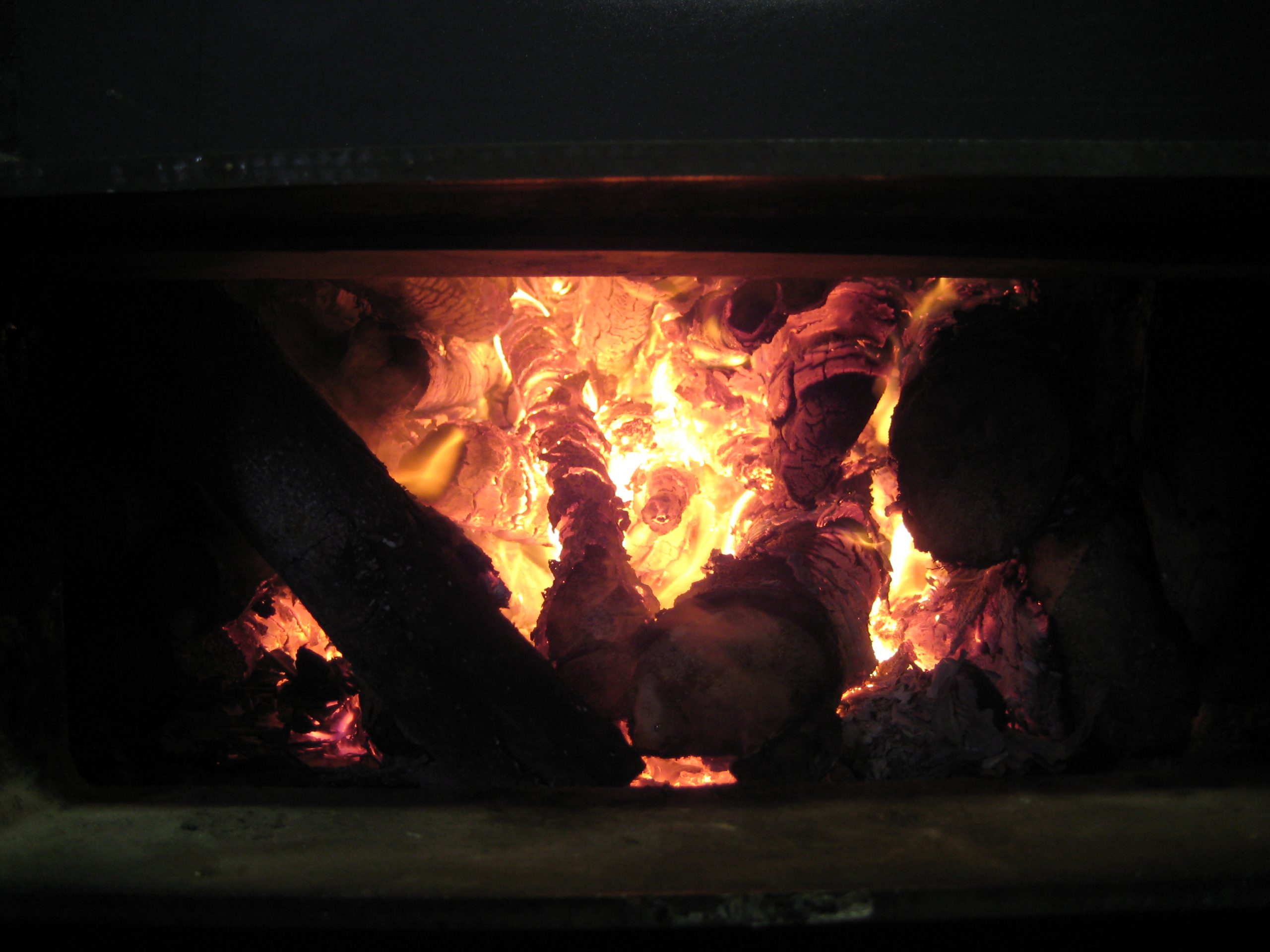

The modern grate. This was taken in 1998 some years after we lost Dad and when Mum came to live with us in Brislington. By then coal had been replaced entirely by a gas fire.
We had a coal fire at home at 33 Victoria Park, Kingswood. (I was born in 1937, so I’m thinking of about 1945 onwards.) Dad had already left for work at the Gas Company (he always made his own breakfast) by the time Mum got up, around 6.30 a.m. when her first task of the day, (Dad did it on Sundays), was on hands and knees, to rake out the ashes from the night before and hope a new fire might catch from the embers of the old; otherwise she would have to start from scratch: paper, stick, coal, sometimes holding a newspaper tightly against it to keep the air out. Then the flames might hopefully blaze fiercely up the chimney, yellow, but with no heat, and then die back when she took the paper down, and added more fuel for it to turn into something that gave out warmth. When the spent ash, had been allowed to go cold, it was put in a metal bin outside. I sometimes still say “Put it in the ash-bin” meaning waste-bin.
During the day sometimes a flat iron and always a kettle stood on the top of a side oven to keep hot ready for use – (hot water coming straight from a tap was an unimaginable luxury) – inside the oven we would bake potatoes (Dad’s own home grown) in their skins, which with a knob of butter and a bit of salt tasted (in my memory) better than any from a modern stove. On each side of the fire were two attached ‘boxes’ with padded tops where I and my little brother Colin (better known for space exploration, moon rocks and Beagle 2) would often sit, toasting our knees (your back always remained stone cold) as well as bread held to the fire on metal expandable toasting forks. I must still have one of these remarkable gadgets here somewhere.
The range was picturesque – but hard work. It had to be regularly black-leaded. It gradually became too much of a liability and one day Dad said ‘I’ll put an ‘ammer into ‘un.” And without more ado did so. I think I was away on one of my frequent travels at the time as if at home I might have urged restraint. It would cost you a fortune to buy nowadays. The ‘modern’ replacement overjoyed Mum, though it was not half as much fun. Mum said, “Okay, but you didn’t have to clean it.” Which was true; housework and me were never more than passing strangers.
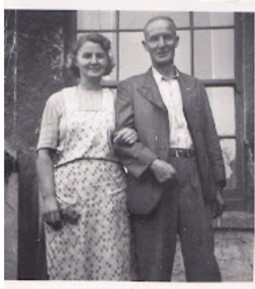
Flo & Jack, our Mum and Dad, ‘out the back’ of no. 33. The coal house was on Mum’s right.
The coal for the fire was regularly delivered by ‘a coal man’ usually burly, but occasionally a more diminutive, though very wiry, chap, heaving each sack on his back up our back garden path, a hundredweight at a time, and emptying the shiny fuel into the coal house, often leaving much of it outside for my Dad to shovel up when he came home, cursing as he did so. Mum made sure that the man did not take away each empty sack, but left it on the ground so the pile could be counted at the end of the ritual. This way no “misunderstandings” – could occur. There were usually 10 sacks by the end of it, half a ton of coal. If the delivery took place in the school holidays, I would count the empties myself. (112 lbs = 1 cwt; 10 cwts = half a ton; 20 cwts = 1 ton. Being a relic of a bygone age I still reckon in Imperial Measures and remember my tables. Metric tonnes? Phooey.)
Later that evening my parents would criticise some of the new load. “Big knobs”, though not so large that Dad would have to crack them up with the sledge-hammer, were preferred to “small coal” or “slack”; some would be “all stone”, or “rubbish”, which contained water and sputtered out like ack-ack bullets from the grate and could get you in the eye.
As a Parliamentary Report stated in 1862, Kingswood Coal was
“excessively good in many respects but not so good a house coal as some others.”[1]
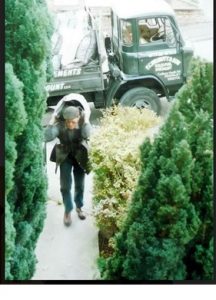 By my time the Kingswood mines were long gone so our coal probably came in from the Mendips,[2] but there were still places where small coal broke through in surface drifts. In the icy winter of 1947, when fuel ran very low, Dad knew where to find one of these streams. He went out with a bucket, and reappeared, beaming, “Pleased as Punch,” with his precious cargo.
By my time the Kingswood mines were long gone so our coal probably came in from the Mendips,[2] but there were still places where small coal broke through in surface drifts. In the icy winter of 1947, when fuel ran very low, Dad knew where to find one of these streams. He went out with a bucket, and reappeared, beaming, “Pleased as Punch,” with his precious cargo.
Many thanks to my friend Bob Leonard, still a Kingswood resident, and family historian par excellence, who had the presence of mind to take a photo of his coal man, ‘F.C. Willmott & Sons of Cadbury Heath Road, Warmley.’ Not the same little guy, unless he wore exceptionally well. as this was dated 1990. Bob also reminded me of the toasting forks and that the chimneys had to be swept twice a year, another ritual. You could get fined if your chimney caught fire.
Not really a non-sequitur: A new mural of Kingswood’s History has recently appeared at Gilbert Road,
It features some mythological knights riding through the Forest, and Kingswood’s coalmining history:
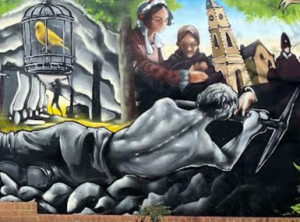

I think the Victorian lady must be Mary Carpenter, (correct me if I’m wrong) with an old woman. I don’t know who she is, but I’m claiming her as one of my great-grannies.
The mural also depicts Colin – (the late Prof Colin Pillinger) – he has found Beagle 2 on Mars, with the flaps all open, and is visited by a spaceman from the future. And note the K9 type Beagle galloping along in the background. Colin loved his dogs.
Congratulations to the artist, Wei Ong, soubriquet ‘Silent Hobo’, and well done to all concerned at Friends of Kingswood Park, especially Jim Whittaker who took the photos for me.
https://cvs-sg.org.uk/friends-of-kingswood-park/
https://www.facebook.com/ourkingswoodpark/
——————————————————
 If anyone would like a copy of one of Colin’s books at a bargain price, I am selling them for a charity, the Scoliosis Association UK, a deformity we shared.
If anyone would like a copy of one of Colin’s books at a bargain price, I am selling them for a charity, the Scoliosis Association UK, a deformity we shared.
(A version of this article appeared in SGMRG Newsletter Issue 62, Winter 2022.)
[1] Western Daily Press, 30.4.1862.
[2] My 2nd KIACP about the Mendip Miners is with the publisher and due out this year, next year, sometime never.


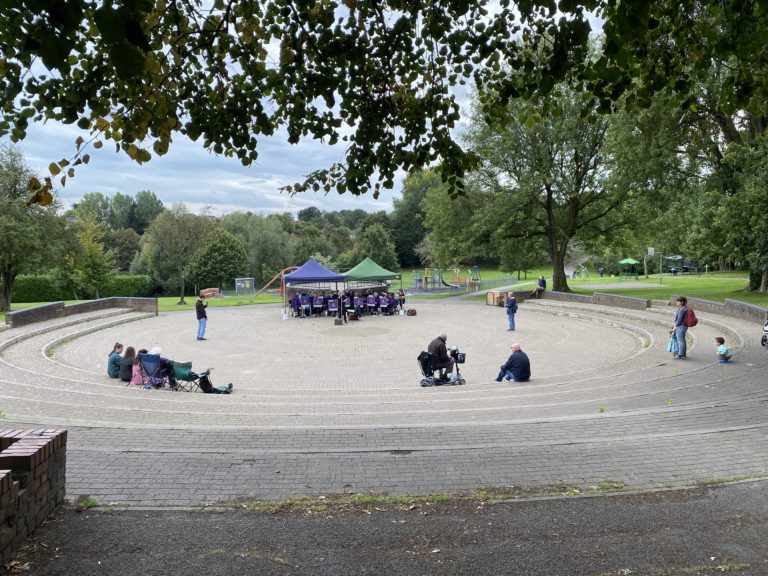






Leave a Comment